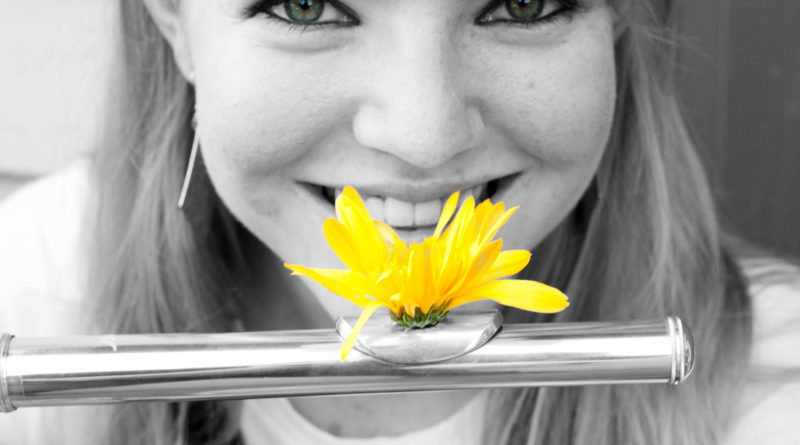Experiment with Prepared Flute During the Pandemic
By Dr. Stacey Russell
Does COVID-19 have you confined to your house?
Now is a great time to experiment with the timbral possibilities of your flute!
WHAT IS PREPARED FLUTE?
Composers have been experimenting with extended techniques to expand the flute’s range of sound. Contemporary composers are writing for the prepared flute: adding objects on or inside the flute, or subtracting parts of the flute in order to increase the timbral possibilities of the instrument.
There are many compositions written specifically for the prepared flute, by composers from Hungary, Poland, Netherlands, Sweden, South Korea, and more! The current repertoire for the genre is only scratching the surface of the possibilities for the prepared flute. Maybe YOU will be inspired!
HOW?
Flute preparation involves the use of many objects of varying materials, used with a wide range of purposes. Common objects include the use of cork, cigarette paper, aluminum foil, or water to change the flute timbre. Not-so-common objects include thimbles, beads, buzzers, or a siren.
The possibilities are nearly endless. In fact, our only limitations are objects that would damage the instrument.
WHERE?
Objects can be placed under or on the keys, as well as inside the tube. Each object and location has a different result. For example, the use of cork in the head joint affects the overtone series, and some notes sound an octave lower than written.
Preparations are not limited to household objects. The addition of parts from other instruments can be used to transform the flute into a new instrument. For example, the addition of a soprano saxophone mouthpiece into the body of the flute results in a bass clarinet quality of sound.
The subtraction of parts of the instrument is also a form of flute preparation. For example, the head joint can usually fit directly into the foot joint. The right-hand fingers now use the foot joint keys to alternate pitches.
WHY?
John Cage changed music with his invention of the prepared piano. The prepared flute provides a unique opportunity for flutists to experiment with alternative sounds and colors in their playing.
Basic flute preparation, such as the use of cork in the head joint or foot joint, is an easy way to help students hear, articulate, and understand color changes. Alongside the many benefits of improvisation in the flute lesson, improv with flute preparations can be fun and beneficial!
Flute preparation can also be used on standard repertoire. WHY? For example, many of us have spent countless hours practicing Mozart’s Concerto in G Major. This important work can be monotonous to practice repeatedly for years, and it is easy for the body, ears, and fingers to switch into autopilot mode. If cork or cigarette paper is added to the flute before practicing this piece, the ear, fingers, and body are on alert. Rhythmic inconsistencies might be discovered through this practice session.
HOW DO I START?
I suggest beginning your preparation exploration with cigarette paper. Most of us have a stockpile of cigarette paper as a quick fix for sticky keys. Cigarette paper can be left under keys on purpose to create a buzzing or rattling sound.
Step one: Cut a piece of cigarette paper that is large enough to cover the A key, but small enough to not interfere with any other key.
Step two: Place under the A key, hold the key down. Tape the end of the cigarette paper down on the bottom side of the flute.
The cigarette paper will only engage when the A key is vented. While blowing, slide your middle finger in and out to test the paper.
EXTRA?
It is important to remember that some objects can damage the flute. Experimentation should be encouraged if it stays within safe contexts. Do not use any objects that may scratch your instrument. Water is only safe if used with the head joint alone.
My website, www.staceyleerussell.com, provides more information on the prepared flute, compositions, recordings, and videos! Please reach out via email with any questions you may have or new sounds you have discovered!
StaceyLee@SLRS.com
Website: www.staceyleerussell.com
Instagram: @x.stacey.russell
